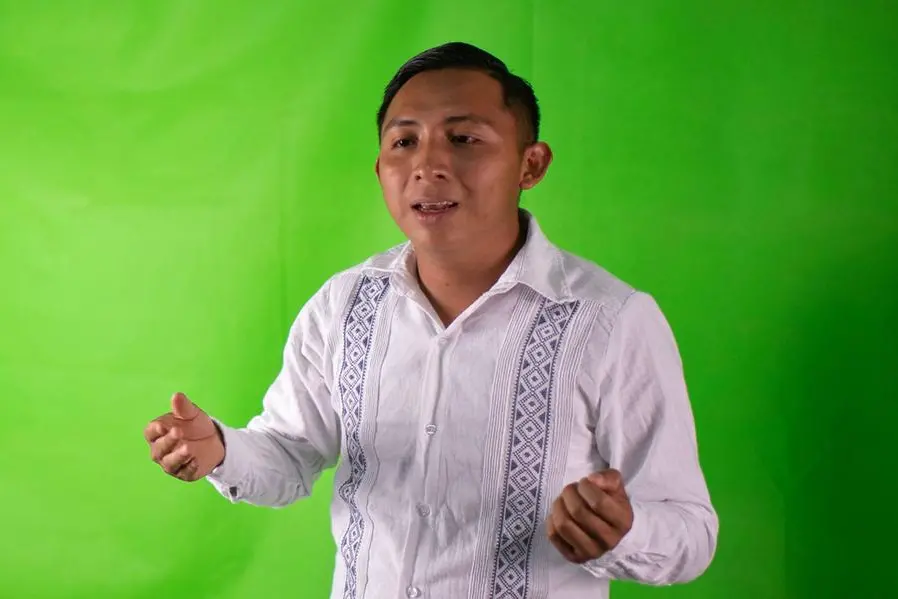PHOTO
Santos Tuz bids his followers farewell with a smile in Maya and Spanish on social media, where the young Mexican teacher shares his Indigenous language with thousands of people.
The 21-year-old, from the southeastern state of Yucatan, discovered his vocation to keep the words of his ancestors alive during the Covid-19 lockdown.
His TikTok account @tuzsantos322 has 343,000 followers and 3.1 million likes.
"Green on the outside, yellow on the inside, what is it?" he asks.
"We're referring to the avocado, which in the Maya language is called 'oon'," Tuz said, wearing an embroidered guayabera shirt and white hat typical of the Yucatan region.
Like many members of younger generations, his teenage sisters have only a rudimentary knowledge of the language, Tuz told AFP.
"I realized that many young people stopped speaking the Maya language. However, they do speak it in their homes. Why? Because they're afraid. It's not that they feel shame. They're afraid of being discriminated against," he said.
Maya is spoken by 860,000 people, the majority in the Yucatan Peninsula, making it the second most widespread Indigenous language after Nahuatl, according to official figures.
Some 7.3 million Mexicans -- 6.1 percent of the population -- speak an Indigenous language.
Tuz said that when he was a child, schools blocked the admission of students who only spoke Maya.
Although public education is now officially bilingual in the Yucatan, Indigenous language teaching is only just being introduced.
"Parents began to stop teaching their children Maya for fear that they would be rejected," added Tuz, who shares knowledge of the language with his students on his own initiative.
Doing it on social media was not easy at first.
Tuz received mockery and criticism, but also messages from people happy to have found him, including old people who regretted not speaking the language of their ancestors.
He has followers as far afield as the United States, Canada and Australia.
Tuz records his videos with a cell phone, a camera and a tripod that a digital content producer from the United States gave him as a gift.
The videos of him are short and colorful, sometimes in the countryside, at his house, visiting a historical site or tasting a typical dish.
He comes from a low-income family and is just beginning to earn money from his videos.
Despite often being asked for selfies, he does not consider himself a full-time influencer.





















